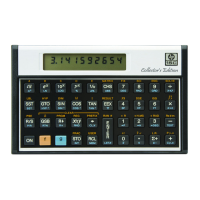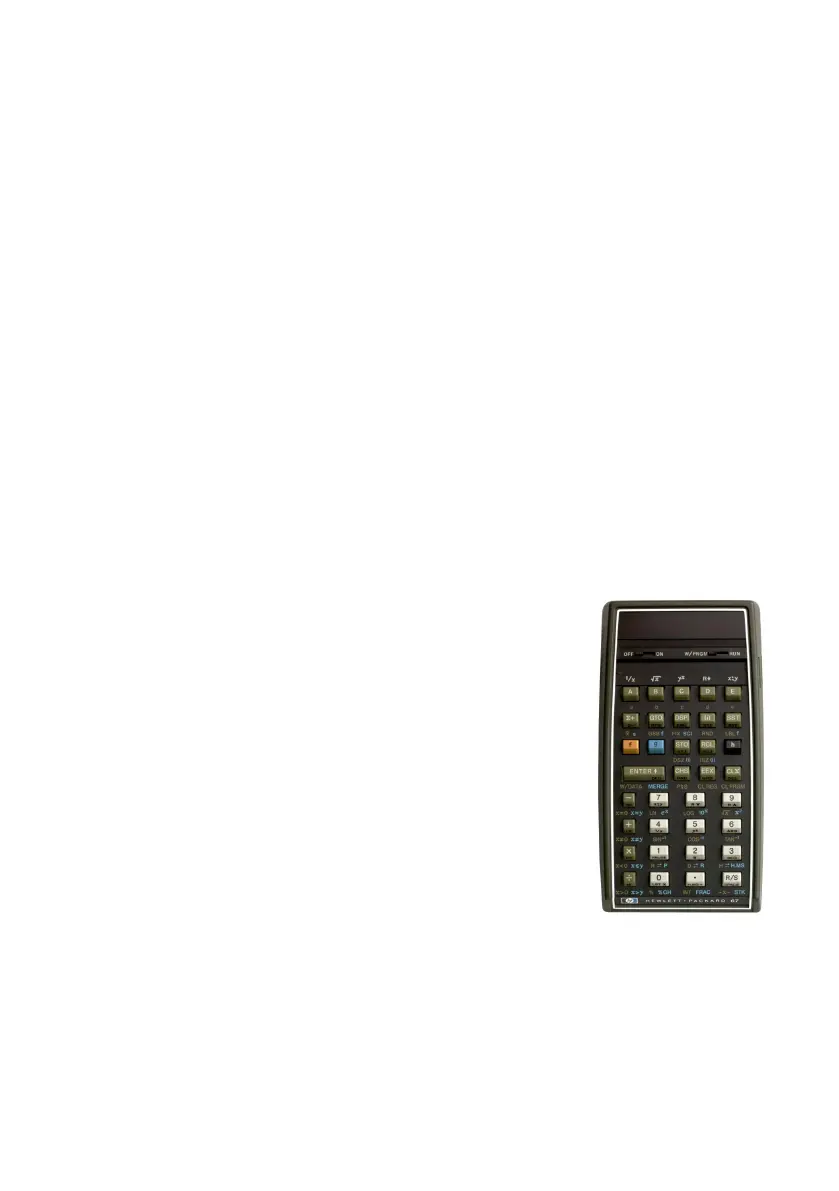Introduction iii
solutions to problems in specific fields, such as navigation, astronomy,
statistics, and mathematics.
The paradigm shift created by the ability to develop your own solutions to
problems and apply them away from big corporate computers was not lost
on users of HP calculators. One such user, Richard Nelson, formed the HP-65
Users Club and began publishing a monthly journal, initially called 65 Notes.
This journal focused on documenting shorter or faster ways of solving
problems manually or with a program and got larger every month as
members of the club began submitting programs or routines they had
developed to share with others. The first programs published included
computing hyperbolic functions and their inverses while a second set used
undocumented program pointer techniques to expand the user-defined
function keys beyond the five keys at the top of the HP-65, labeled A through
E. The club later became known as PPC (Personal Programming Center),
publishing the now-renamed PPC Journal, and remained active for well over
10 years, even creating their own custom plug-in module for a later HP
calculator model. With each new HP calculator introduced, the club sought to
find new ways to extend functionality, especially through undocumented
features, and to apply these machines to new problems as power increased.
The HP-65 was followed by the fully programmable
HP-67, and its desktop sibling, the HP-97, on July 1,
1976. In some ways, however, these were more
extensions of the HP-65 than a new direction. They
provided 224 program steps, each of which could
merge several keystrokes into a single command,
rather than store each keypress as a separate step as
had been the case with the HP-65. The HP-67 and HP-
97 also added a “smart” card reader that could store
calculator status information on the cards as well as
either programs or data.
Some of the interesting new features on these models
included:
A flag that would be set upon entering a
number from the keyboard, allowing the detection of input by the user;
A set of 10 data registers that were exchangeable with another set of
10 data registers, referred to as primary/secondary registers; and
The ability to write programs that would print on the HP-97 but pause
to display results on the HP-67, allowing programs written on one
model to be executed on the other without modification.
HP-67

